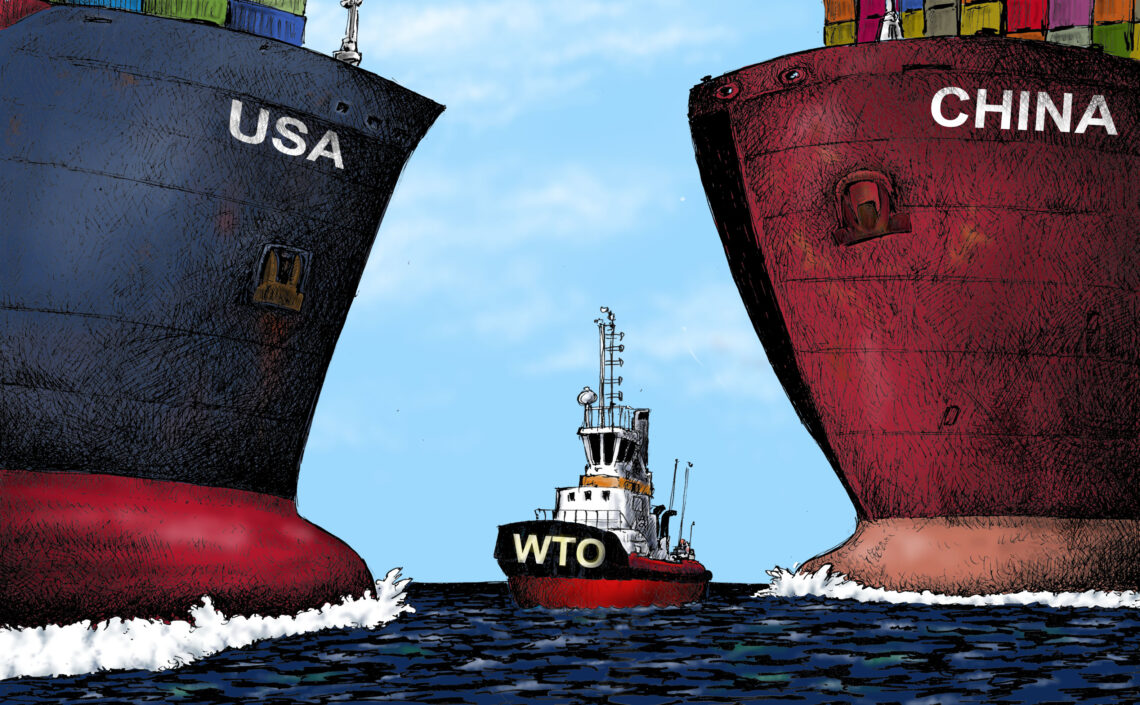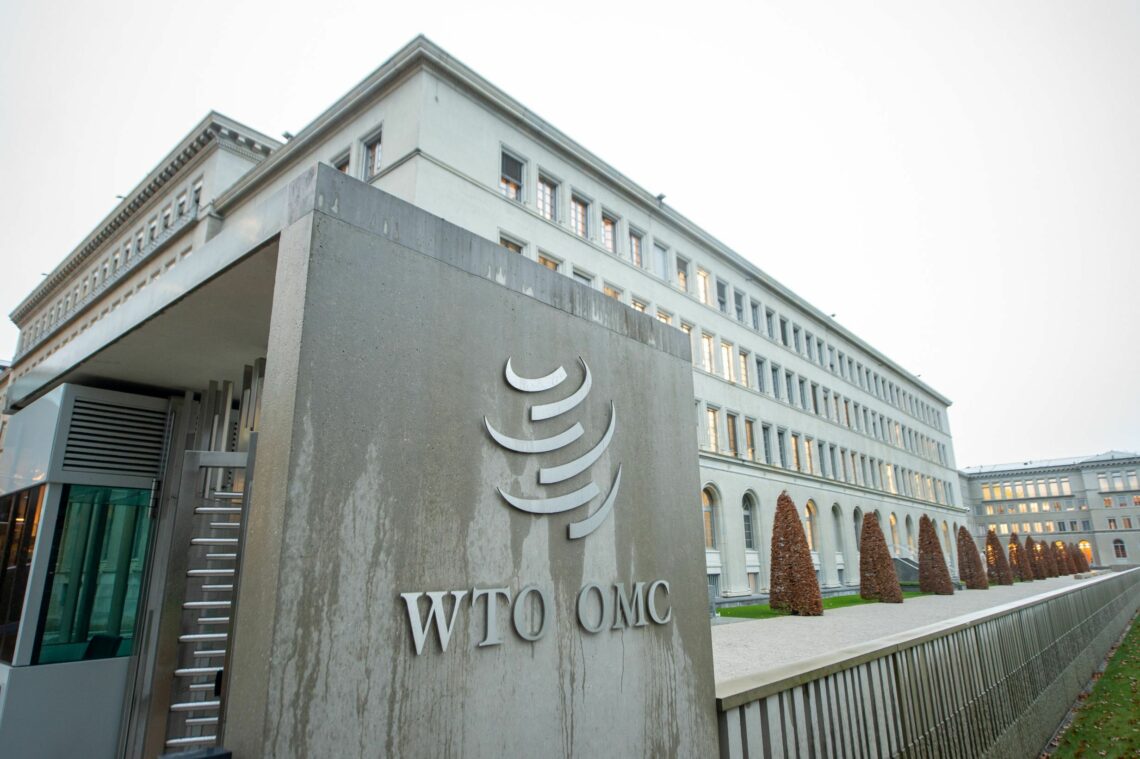The WTO drifts toward irrelevance
The WTO is a relatively cheap international organization, but it has achieved little since its creation in 1995. Reforms could make the WTO more useful, especially if they turned it into a body that collects fines from those who violate simple rules – with no exceptions.

In a nutshell
- The WTO has been hamstrung and is losing significance
- Powers may try to use it as a tool to pressure other countries
- Reforms could turn the WTO into a free trade enforcer
Time has made some international organizations obsolete. For example, the International Monetary Fund (IMF) was created to supply liquidity to countries with temporary payment imbalances, but lost much of this role when the Bretton Woods’ fixed-exchange regime was shelved. The International Bank for Reconstruction and Development (IBRD) came into being as World War II was ending and was tasked with promoting growth in Western Europe. It never took off. Instead, it morphed into the World Bank, whose mission was to fund projects in developing countries around the globe.
The World Bank also lost relevance when it became apparent that financing development initiatives was not enough and sometimes even counterproductive. In the end, the IMF managed to reinvent itself as a kind of bankers’ club and supposedly impartial country analyst. In recent decades, the World Bank has focused on education, climate change and the war on extreme poverty.
Other international organizations may soon come under pressure and will need to find a new mission. One of them is the World Trade Organization (WTO), which is also failing to honor expectations.
Mixed performance
The WTO is the heir of the General Agreement on Tariffs and Trade (GATT), which was part of a more ambitious project known as the International Trade Organization (ITO). The ITO was designed not long after the IMF and the IBRD, and torpedoed in 1950 by the United States. Despite much drumbeating about free trade, the opponents of the ITO feared that international rules would interfere with domestic politics.
The dispute-settlement mechanism is weak and its appellate body is no longer active.
The GATT, however, survived. Although it lacked teeth, it was a useful, lightly staffed organization that produced statistics, free-market oriented studies and, more importantly, a convenient screen behind which major players could orchestrate bilateral and multilateral agreements. The WTO was created in 1995 and has a wider mandate than the GATT: it covers a broader set of subjects and provides a procedure for settling disputes.
Despite its grand initial promises, however, the WTO’s performance remains mixed. The dispute-settlement mechanism is weak and its appellate body is no longer active. Moreover, accession and compliance with basic free-trade standards is discretionary and ultimately a matter of lengthy negotiations between the candidates and the big players. Politics has become an increasingly important factor in the proceedings.
Perhaps most significantly, the WTO has not been able to prevent tensions over trade in services and agricultural products, nor keep countries from resorting to nontariff barriers like regulation to protect their domestic industries. The Doha Development Round of negotiations to reform international trade was its only major initiative. Started in 2001, it is technically still active, but going nowhere.
Since it no longer fulfills its main task, all that remains left for the WTO and its staff of 600 is to produce studies and statistics, most of which would be available from other sources at little or no additional cost. The situation leaves us with four possible scenarios.
Pandora’s box
The first scenario is business as usual, in which prudence prevails. Overall, the WTO is inexpensive. It operates with a relatively small bureaucracy – much smaller than those of the IMF (2,700 employees) and the World Bank (16,000 employees). Any costs saved by scrapping the organization are outweighed by the potential political costs of being blamed for an increase in protectionism.

No major player is pressing for change. The largest single contributors are the U.S. and China (including Hong Kong). They pay about 23 million dollars each (the European Union’s share is about 45 million). This is not worth the risk of opening a Pandora’s box, with unknown political repercussions.
This explains why the second scenario – disbanding the WTO outright – is unlikely. But it also explains why “business as usual” would be equivalent to downgrading the WTO to a statistical office with meeting facilities available on request.
On the other hand, a third scenario could soon materialize whereby some powerful countries lead a drive to transform the WTO into a tool of geopolitical pressure. That is what President Donald Trump set out to do in November 2019, when he de facto killed the organization’s appellate panel by blocking the appointment of new members. In his view, the body was encroaching on U.S. sovereignty. Other governments essentially use the WTO for political purposes as well, when they claim that they are deviating from free trade for the sake of fair trade and ask the organization to legitimize their actions.
The broad course of action undertaken by the Trump administration (and other policymakers worldwide) could also be President-elect Joe Biden’s. After all, he was no free-trade champion while he was serving as Barack Obama’s vice president, and tactful wording has rarely been his primary concern when addressing opponents.
Back to the future
However, the key to understanding what might happen next is the U.S. attitude toward the EU and China. The EU will probably be a minor source of problems. President-elect Biden has already declared his willingness to defuse trade tensions with the Europeans. It should not be difficult to compromise. After all, both parties are eager to preserve their protectionist stand in agriculture, and Mr. Biden’s hostility to large multinational companies seems consistent with the EU attitude.
U.S. President-elect Biden has had harsh words for China in the past.
The transatlantic trade regime may soon return to the pre-Trump framework, and include an agreement designed to increase taxation on large, successful, high-tech companies. The WTO could try to cut out a role for itself by putting forward suggestions about how to frame and fine-tune a “new” transatlantic deal, possibly in response to recent China-led initiatives in Southeast Asia. If that were to happen, there would be little to celebrate. An opportunity to promote growth would be missed as free-market principles give way to political interest and fiscal and regulatory harmonization. Bilateral and regional trade deals would continue to be the rule, and the WTO would have to transform those deals into a multilateral agreement, possibly by launching a new round of negotiations and diverting attention while other bilateral deals are hammered out.
China will be a much more delicate matter. Mr. Biden has had harsh words for China in the past. Yet, he can still compromise without losing face and blame the previous administration for having mishandled trade relations with Beijing and for having created an even larger U.S. overall trade deficit. Likewise, China can blame President Trump for having gone too far in a trade war that has claimed plenty of victims.
Finding compromises and avoiding new attempts to show political muscle will be the major challenge for the leaders in Beijing and Washington D.C., possibly also for the WTO. Trade relations with Russia and least-developed countries will be the next nut to crack and another opportunity to revive the WTO.
Covid-19 is a serious threat to international trade flows. Trade barriers were on the rise before the virus struck, and are bound to increase while the overall economic situation deteriorates. In the West, domestic pressure groups ask policymakers to hand out subsidies at home and restrain competitive pressures from abroad. Given its current powers, there is little the WTO can do if it contents itself with conducting what-if exercises that illustrate the virtues of trade liberalization. Acting as a puppet and turning bilateral deals driven by politics into multilateral deals ruled by common sense is a possibility for surviving, but not a very helpful one.
Slow progress
There is a fourth scenario. The WTO could be given the power to enforce a gradual transition toward unfettered free trade, regardless of the fair-trade rhetoric. Its member countries could consider using the WTO staff’s technical expertise to compute the welfare losses that protectionist policies impose on consumers, and allow the organization to require protectionist countries to pay fines accordingly. The revenues could be used to fund some shared worldwide project, like adjustment to climate change or educational programs in poor countries.
Will this happen? Probably not. First, the WTO top brass have neither the charisma nor the will to stick their necks out. Second, local policymakers tend to use international organizations as a front to legitimize their actions, rather than as an instrument to prevent them from giving in to populist impulses. Global policymaking hardly helps win elections, and often contributes to losing consensus. Third, some countries – notably China – will probably leave the club, and nobody wants to take responsibility for triggering a new kind of confrontation with Beijing.
This is why the outlook for the WTO is discouraging. The future of free trade will increasingly depend on the political agendas of the two major players: China and the U.S.






